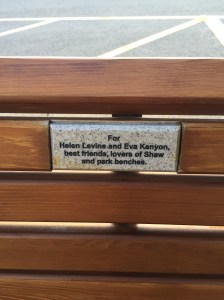
When we place our trust, is it with something or someone?
This is ‘Tilt’. Essentially you stand looking out the window on the 94th floor of the John Hancock building in Chicago. Then the windows tilt outwards. 30 degrees. You are then suspended, lying on a glass window, ninety four floors up.
As I queued to experience this, I was noticing my need to trust someone or something.
I looked at the mechanisms. The four hydraulic pistons that lowered the side of the building outwards. The size of the bolts. The seals on the glass. The steel framework of girders. The computer the operator used. I couldn’t see it, but I wondered about the software on that computer. I know only too well that this is often the weakest point.
Then I considered the operator himself. Could he be trusted? Was he experienced? I considered the designers. Surely they knew what they were doing? This was specialist. Then I considered the people who might have granted permission for this. The safety experts. I considered those who had tested it. Were they thorough? I looked at my potential fellow ‘riders’. They looked sensible.
Then I noticed I turned to rationality. It has been here a while and must have lowered many thousands of people. The safety testing and fail safe mechanisms must be all encompassing. Like a lift, this surely is designed with so many precautions? Glass and steel are used in applications requiring more stress and pressure than this.
Then I turned to irrational logic. Those kids are doing it. If they can, surely I can. Hang on though, those two people in front are overweight, and I’m going on with seven other adults. That’s more weight, what if it’s too much? I ‘reasoned’ it couldn’t have failed, because I would have read about the eight people falling to their deaths.
By now my waiting time had been consumed by my trust exploration and I was up next.
I loved it.
So who or what was I needing to trust? I couldn’t tell if the mechanisms were sound as I’m not an expert. I would never meet the people involved in designing, testing or installing this.
Maybe I just needed to trust myself? Like I do every day I cross the road, or choose what I eat? Like I do when I choose everything I do and who I do it with?
The need to trust, is tangible in us. Yet trust itself, so intangible.










